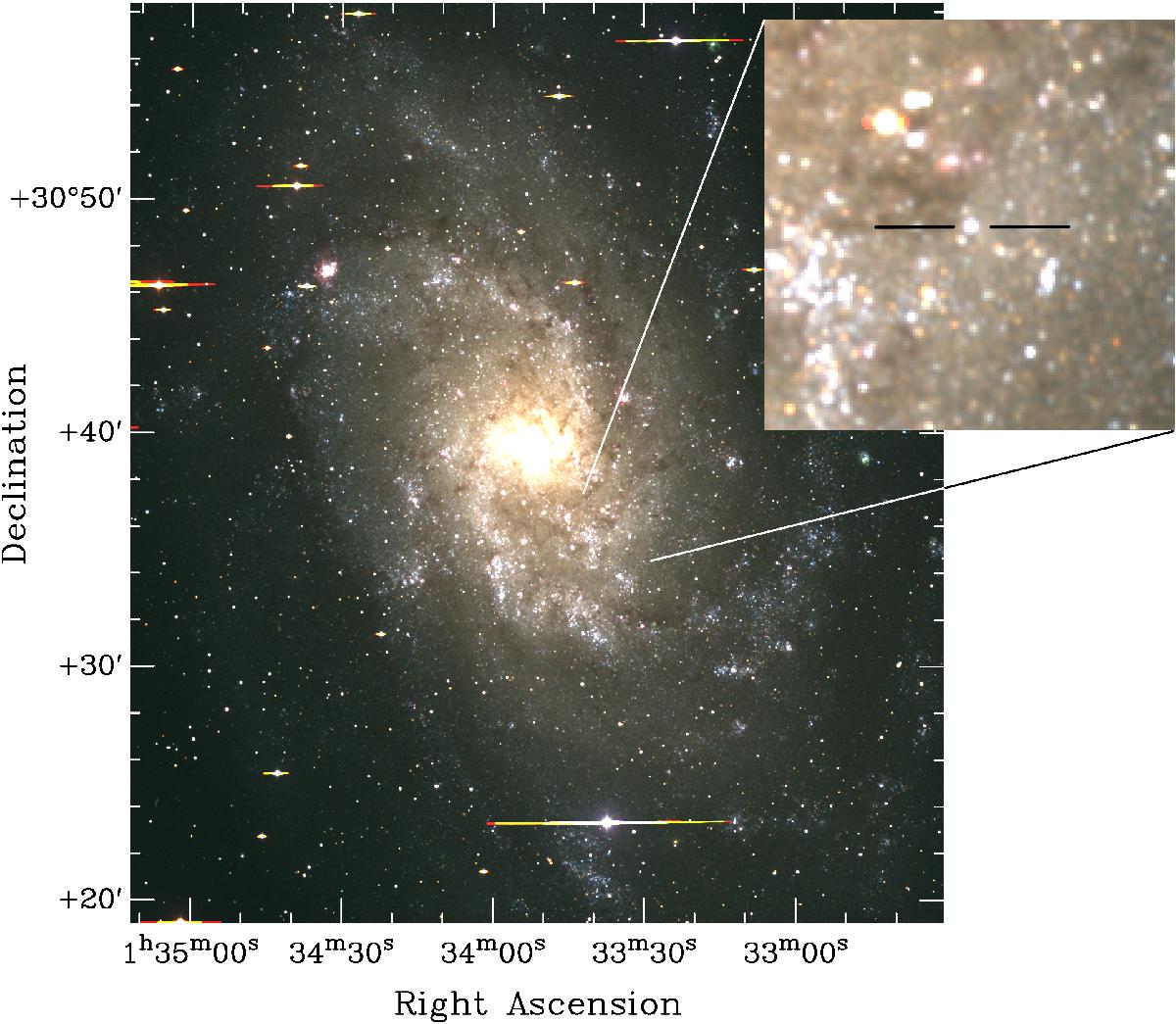Var C: Long-term photometric and spectral variability of a luminous blue variable in M 33
Abstract
Aims: So far the highly unstable phase of luminous blue variables (LBVs) has not been understood well. It is still uncertain why and which massive stars enter this phase. Investigating the variabilities by looking for a possible regular or even (semi-)periodic behaviour could give a hint at the underlying mechanism for these variations and might answer the question of where these variabilities originate. Finding out more about the LBV phase also means understanding massive stars better in general, which have (e.g. by enriching the ISM with heavy elements, providing ionising radiation and kinetic energy) a strong and significant influence on the ISM, hence also on their host galaxy.
Methods: Photometric and spectroscopic data were taken for the LBV Var C in M 33 to investigate its recent status. In addition, scanned historic plates, archival data, and data from the literature were gathered to trace Var C's behaviour in the past. Its long-term variability and periodicity was investigated.
Results: Our investigation of the variability indicates possible (semi-)periodic behaviour with a period of 42.3 years for Var C. That Var C's light curve covers a time span of more than 100 years means that more than two full periods of the cycle are visible. The critical historic maximum around 1905 is less strong but discernible even with the currently rare historic data. The semi-periodic and secular structure of the light curve is similar to the one of LMC R71. Both light curves hint at a new aspect in the evolution of LBVs.
- Publication:
-
Astronomy and Astrophysics
- Pub Date:
- September 2015
- DOI:
- 10.1051/0004-6361/201323308
- arXiv:
- arXiv:1505.07327
- Bibcode:
- 2015A&A...581A..12B
- Keywords:
-
- galaxies: individual: M 33;
- stars: massive;
- stars: variables: S Doradus;
- stars: individual: Var C;
- Astrophysics - Solar and Stellar Astrophysics
- E-Print:
- 13 pages plus 14 pages appendix, 8 figures (1 figure in appendix with reduced resolution)
